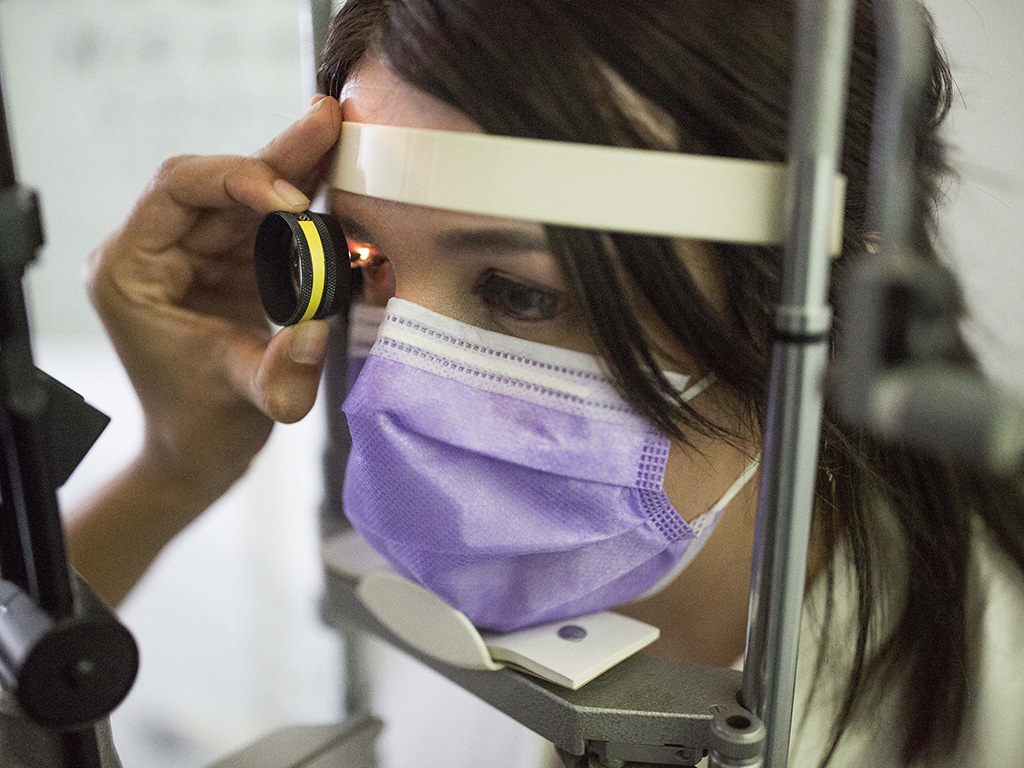This website uses cookies so that we can provide you with the best user experience possible. Cookie information is stored in your browser and performs functions such as recognising you when you return to our website and helping our team to understand which sections of the website you find most interesting and useful.
News
New research funding to improve outcomes for women
CERA’s world-leading research into female carriers of X-linked inherited retinal diseases has been given a vital funding boost thanks to The Felton Bequest.
CERA has received $300,000 over three years from The Felton Bequest to advance our groundbreaking research on female carriers of X-linked inherited retinal diseases (IRDs).
With this funding, Dr Sena Gocuk will lead two new research projects with the support of CERA Principal Investigators Associate Professor Lauren Ayton and Dr Thomas Edwards.
The first study aims to establish a clinical test to identify a carrier’s risk of severe vision loss, and the other will investigate the safety and efficacy of gene therapy in these women.
“Treatment at this stage is focused on males with X-linked conditions. What we’re trying to find out is whether the treatment available for men in current clinical trials will work on women as well,” says Dr Gocuk.
“I’m so honoured that we’ve received this support from The Felton Bequest. It allows us to explore the questions that remain unanswered for women living with these eye diseases.”
Understanding female carriers of X-linked IRDs
IRDs are a broad group of eye conditions that result from a change or ‘mutation’ in one or more genes. X-linked IRDs, such as choroideremia and X-linked retinitis pigmentosa, are caused by a gene mutation on the X chromosome.
Males, who have both an X and a Y chromosome, will develop the disease if their X chromosome carries the mutated gene. This typically results in severe vision impairment.
Female carriers of X-linked IRDs also have the mutated gene on their X chromosome. But because they have two X chromosomes – one mutated and one healthy – the disease affects them differently.
“The term ‘carrier’ implies they only carry the mutated gene to pass it on to their son. But we now know that carriers can experience vision loss, and some are even as severely affected as males,” says Dr Gocuk.
Dr Gocuk’s previous research has shown that disease severity in female carriers depends on how much of each X chromosome is being expressed.
If most of the cells in the retina are expressing the mutated gene, they will have severe retinal disease. If cells are mostly expressing the normal gene, then they’re relatively unaffected.
Dr Gocuk and her team are now building on this knowledge to explore how female carriers can be better diagnosed and whether they are suitable candidates for emerging treatment options.

Getting female carriers into clinical trials
Currently, there are no approved treatments for X-linked IRDs. However, gene therapy – which replaces a defective gene with a healthy copy – is a promising option.
While there are clinical trials for X-linked IRDs currently underway, women are usually excluded because there is no safety data on the effect of gene therapy in female carriers.
“Males with X-linked conditions don’t have a functional gene so gene therapy just replaces the gene that’s missing. But in women, we need to understand how an introduced gene will interact with the existing ones,” says Dr Gocuk.
To investigate this, Dr Gocuk and her team are collaborating with Head of Genetic Engineering Research Associate Professor Guei-Sheung (Rick) Liu and Dr Livia dos Santos Carvalho from the University of Melbourne – experts in preclinical models for IRDs.
Initial studies will explore the effects of gene therapy using cells that mimic the genetic profile of carriers. Once they understand what’s happening at a cellular level, they will use mouse models to assess whether gene therapy can slow disease progression.
“We’re hoping this lab work will give us a clearer idea of whether there are any implications or toxic effects of having that gene introduced, and therefore, whether it is feasible for female carriers to be included in future gene therapy trials,” says Dr Gocuk.
Greater certainty for female carriers
The research also aims to develop a saliva or cheek swab test for female carriers that shows how the genes are being expressed between the two X chromosomes. This will offer insights into their disease severity and how it is likely to progress over time.
Through a collaboration with Dr Quentin Gouil and Professor Marnie Blewitt at the Walter Eliza Hall Institute (WEHI), the team is using readily available peripheral DNA in saliva, cheek swabs and blood to determine which sample gives the best indication of what’s happening in the retina.
“I’m hoping this data will help us develop a very simple lab test to guide carriers on what they can expect – whether they will remain on a mild trajectory of retinal disease or progress to severe retinal degeneration,” says Dr Gocuk.
“This information would be very valuable for the many carriers we know feel anxious about their own vision.”
Advocating for equality
Dr Gocuk’s research is motivated by her desire to ensure female carriers have access to the same support and treatment opportunities as men with X-linked IRDs.
“Once I understood the issues carriers were facing, like being dismissed, misdiagnosed or diagnosed too late, I saw there was a need to advocate for these women.”
“I became very passionate about raising awareness that carriers can be affected, as well as helping clinicians to better support them,” she says.
“There’s definitely a growing interest in female carriers, but we need the time and resources to do these research projects. Funding from The Felton Bequest helps us achieve that, and we sincerely thank them for the support.”

